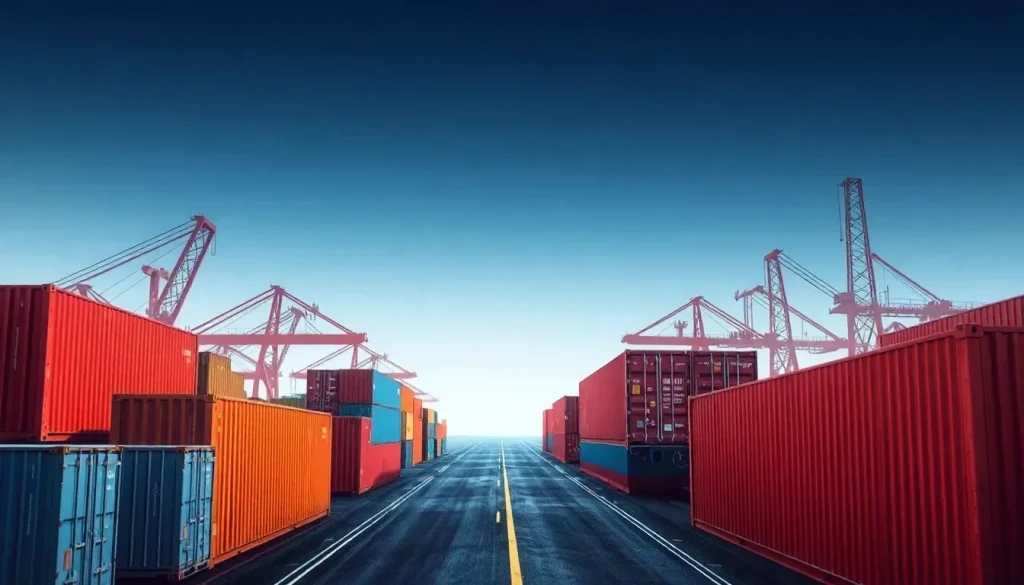Shippers and 3PLs navigate tariff uncertainty report details

In the ever-evolving landscape of global trade, supply chain disruptions arising from tariffs and uncertain trade policies have emerged as significant hurdles for shippers and logistics providers. The repercussions are being felt across various sectors, prompting businesses to reevaluate their sourcing, production, and distribution strategies. Insights from the 2026 Third-Party Logistics Study, released on October 7, underscore this urgency.
The shifting dynamics in global trade not only affect cost structures but also challenge the very architecture of supply chains. As Mark Baxa, president of the Council of Supply Chain Management Professionals (CSCMP), aptly puts it, the impact of tariffs extends beyond merely financial implications, forcing companies to rethink their operational frameworks.
Current Strategies Amid Tariff Challenges
According to the latest survey data, a significant portion of third-party logistics providers (3PLs) are grappling with how to best navigate these turbulent waters. Notably, 41% of 3PLs do not plan to implement any short-term tariff strategies, while a corresponding percentage is focused on domestic sourcing.
Simultaneously, shippers are exploring various alternatives to mitigate the impacts of tariff-related disruptions. Some of the notable strategies include:
- Alternative sourcing approaches: 45% of shippers are actively seeking new sourcing methods.
- Identifying new foreign suppliers: 40% are looking to establish relationships with suppliers outside their traditional networks.
- Modeling tariff risks: 40% are employing analytical models to assess and prepare for potential tariff impacts.
- Inventory adjustments: Less than one-third plan to increase inventory levels, reflecting a cautious stance.
Baxa further emphasizes that the increased costs associated with holding higher inventory are driving many shippers back towards a just-in-time model, which prioritizes efficiency and responsiveness.
Looking further into the future, both shippers and 3PLs recognize the need for long-term tariff strategies. The most frequently cited methods include reevaluating product portfolios and reestablishing manufacturing bases. However, concerningly, around 30% of shippers and 29% of 3PLs report having no plans to adopt such strategies, potentially leaving them exposed to future trade disputes.
Business confidence remains surprisingly robust
Despite the overwhelming uncertainties, the study reveals an unexpected sense of optimism among businesses. Very few respondents indicated a lack of confidence in their ability to navigate the current challenges.
This optimism can be attributed to the lessons learned during the COVID-19 pandemic, which compelled many companies to diversify their production locations. As a result, there has been a noticeable trend of moving production to regions such as Southeast Asia and Mexico, or even back to the United States.
Data indicating that Mexico has overtaken China as the primary trading partner with the United States over the last two years supports this observation. However, the report also highlights that the transition to new production sites is not without its challenges; countries outside of China may lack the skilled labor force and logistical efficiencies that have long been established in traditional manufacturing hubs.
The evolving role of AI and machine learning in logistics
As the logistics landscape shifts, the integration of artificial intelligence (AI) and machine learning continues to gain traction. The study found that a remarkable 67% of shippers and 73% of 3PLs are now leveraging some form of AI and machine learning technology.
This technological integration manifests in various ways, including:
- Predictive demand forecasting: AI technologies are helping businesses identify patterns and optimize inventory management.
- Customization and flexibility: Machine learning is facilitating specialized solutions tailored for specific industries, such as healthcare.
- Cost optimization: By automating routine tasks, companies can enhance accuracy and reduce operational expenses.
- Predictive analytics: Advanced AI capabilities allow organizations to foresee potential disruptions, enabling proactive adjustments in routing and inventory management.
Ann Marie Jonkman, vice-president of global industry strategies at Blue Yonder, notes that the true power of AI lies in its ability to anticipate issues before they arise. By continuously learning from historical patterns and enabling real-time operational pivots, AI enhances efficiency and directly reduces labor costs.
The widening talent gap in the supply chain sector
Amid tariff uncertainties and technological advancements, another pressing challenge has surfaced: a growing gap between the demand for skilled professionals and the available workforce. This talent gap poses a significant risk to the stability and efficiency of supply chains.
The survey indicates that many shippers are grappling with labor shortages that have adversely affected their service agreements. Compounding this issue is the accelerating pace of retirements among seasoned supply chain professionals, further exacerbating the talent crisis.
Baxa emphasizes the urgent need for businesses to invest in internal employee development. While many companies allocate budgets for ongoing training, data reveals that fewer than 5% effectively utilize even 80% of their training budgets, creating a disconnect that can become painfully evident during periods of disruption.
Celebraing 30 years of the logistics study
This year marks the 30th anniversary of the esteemed Annual Third-Party Logistics Study, originally launched by Dr. C. John Langley, a supply chain professor at Penn State University, in 1996. The current iteration of the study is conducted in collaboration with NTT Data Services and Penske Logistics.
Results from the latest study show that a notable 81% of shippers believe that 3PLs are instrumental in enhancing service levels, while 88% report positive experiences in their relationships with 3PL partners.
Dr. Langley remarks, "This year’s study results confirm the progress being made by shippers and their 3PLs in spite of new challenges and disruptions that have arisen." This optimistic perspective highlights the resilience of the logistics sector in adapting to changing conditions.
As businesses continue to navigate tariff uncertainties and labor shortages, the lessons learned from the past will be pivotal in shaping more robust, adaptable supply chains for the future.




Leave a Reply